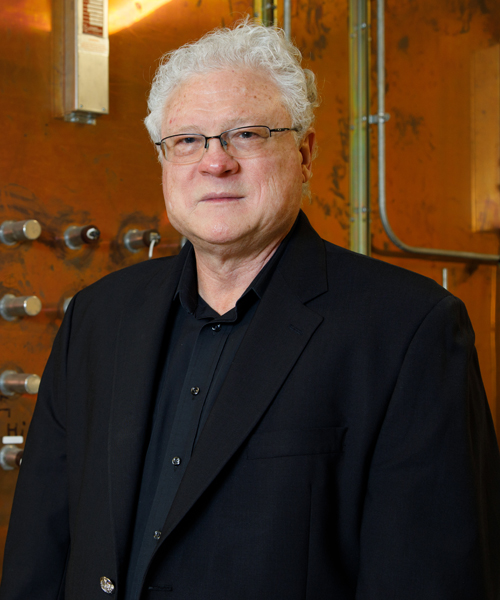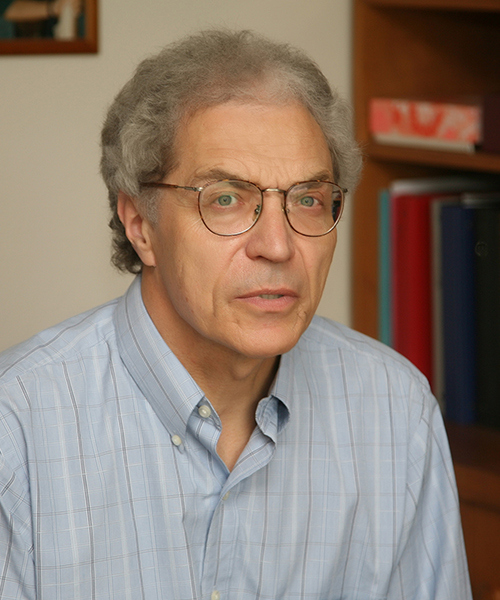TcSUH EventS

Bi-Weekly Seminar
Interface and Processing Effects on Oxide Thin Film Epitaxy
Date: Friday November 21, 2003
Time: 12:00 pm – 1:00 pm
Location: Houston Science Center – Building 593 — Room 102
Overview
Understanding the epitaxial mechanisms, interface structures, and processing condition effects has become a technically important issue in oxide thin film epitaxy and device fabrication. We have systematically investigated the effects from strains, substrate surface step terraces, misfit dislocations, and processing partial pressures and temperatures on the epitaxial behavior and physical properties of various as-grown ferroelectric (Ba,Sr)TiO3, ferromagnetic (La,Ca)MnO3, and highly ionic conductive oxide Gd:CeO2 thin films. Many interesting phenomena have been observed in these systems. For instance, misfit edge dislocation spacings in the ferroelectric Ba0.6Sr0.4TiO3 thin films on (001) LaAlO3 can be adjusted by processing oxygen partial pressures. Strain energy in the highly ionic conductive Gd:CeO2 thin films on (001) LaAlO3 can be released by unique directionally aligned nanoparticles. Models of the surface-step-terrace that induce the formations of conservative and non-conservative nano domain boundary structures have been developed to understand the microstructure-property relationships. Details will be presented in the talk.
Back to TcSUH News & Events

Bi-Weekly Seminar
Magnetic Nanowires
by: Dr. Li Sun
Date: Friday November 07, 2003
Time: 12:00 pm – 1:00 pm
Location: Houston Science Center – Building 593 — Room 102
Overview
Nanoscience and technology as an emerging interdisciplinary research area has caught a lot of attention in recent years. Nanostructured materials exhibit novel properties bulk samples do not possess, however, fabrication of well-controlled nanostructures, understanding physics at the reduced dimensionality and device application of individual nanomaterial still remain challenging. Here we use nanowires as an example to show how magnetic properties of materials can be designed and tuned by nanofabrication. Magnetic shape anisotropy, finite size effects and magnetization switching in these quasi-one dimensional structures has been studied. Manipulation and potential application of individual single elemental and multi-component magnetic nanowires will be discussed.
Back to TcSUH News & Events

Bi-Weekly Seminar
Dielectric Properties of Biological Cell and Protein Suspensions
Date: Friday October 31, 2003
Time: 12:00 pm – 1:00 pm
Location: Houston Science Center – Building 593 — Room 102
Overview
The charges in live cells can be polarized by an electric field, creating a dipole moment for each cell. As a result, a suspension of live cells in water has an enormous dielectric response at low frequencies, and this response decreases rapidly with increasing frequency. The magnitude of the low-frequency dielectric response has been shown theoretically to correlate with the cell’s membrane potential. Recently, we have been exploring new applications, such as sensors designed to detect biological warfare agents inside sealed containers. Another ongoing study is the dielectric response of tubulin dimers, in an attempt to determine their intrinsic dipole moment. Tubulin is the protein that comprises microtubules -- remarkable structures that form much of the cellular cytoskeleton. In addition, due to their high concentration in neuronal axons, microtubules have been proposed to play a role in information processing. We are investigating several approaches to performing linear and nonlinear dielectric spectroscopy, ranging from simple direct electrode methods to techniques that employ SQUIDs.
Back to TcSUH News & Events

Bi-Weekly Seminar
Superconducting MRI Coils for Clinical and Research Applications
by: Dr. Jarek Wosik
Date: Friday October 10, 2003
Time: 12:00 pm – 1:00 pm
Location: Houston Science Center – Building 593 — Room 102
Overview
Magnetic Resonance Imaging (MRI) is related to the phenomenon of nuclear magnetic resonance (NMR), which is based on the excitation and relaxation of nuclei (most frequently protons) within living tissues in a dc magnetic field. In a MRI set-up, a receiver probe detects such a signal. For selected applications, high-Tc superconductor MRI receiver coils and coil arrays have superior properties to those of comparable copper coils. In this talk, a brief review of MRI physics will also include design issues such as the signal-to-noise ratio dependence on frequency, body size and coil size. Fundamentals of design processes of MRI coils, including issues pertaining to cryo-packaging will be discussed together with examples of practical coils made of normal metal and superconductors. New theoretical and practical concepts for significant shortening of the MRI acquisition time by using parallel processing with phased array probes will be presented. Utilization of superconducting coils in cardiovascular medicine will be discussed for examination of aortic walls and identification of atherosclerotic plaques responsible for acute coronary syndromes (vulnerable plaque). Carotids images will show that superconducting coils can overcome limitations of routine MRI, which does not provide enough resolution for plaque investigation. Application of the HTS resonators in research on small animals will be addressed.
Back to TcSUH News & Events

Bi-Weekly Seminar
Raman Spectroscopy of Structural Disorder
Date: Friday September 19, 2003
Time: 12:00 pm – 1:00 pm
Location: Houston Science Center – Building 593 — Room 102
Overview
Mostly unwanted, the static or dynamical lattice disorder in many cases is either desirable or unavoidable. Static disorder is always present in non-stoichiometric, microtwinned and nano-size materials. Dynamical disorder governs such phenomena as ion diffusion and ion conductivity. It is also substantial for the unusual properties of CMR compounds. Raman spectroscopy is an efficient tool for study of structural disorder, including the dynamical one. This will be demonstrated for three different classes of materials. The doped rare earth manganites R1-xAxMnO3 (R=rare earth, A=Sr,Ca,Ba,Pb) provide an example of partial disorder due to non-coherent Jahn-Teller distortions of oxygen sublattice. In the insulating paramagnetic or antiferromagnetic phases the Raman spectrum is dominated by broad bands reflecting the partial (oxygen) phonon density-of-states (PDOS). These bands disappear in the metallic ferromagnetic phase, where the Jahn-Teller distortions cannot develop. The second example will illustrate the Raman monitoring of structural disorder in NaxCoO2 crystals. It will be shown that the disorder in this material is surface-dependent and develops with ageing. As a third example, the evolution with temperature of the Raman spectra of nanoporous Na2Nb2-x MxO6-xOH)x .H2O will be discussed. Raman spectroscopy in this case allows monitoring of the dehydration above 250C and the transition to a disordered perovskitelike structure above 550C.
Back to TcSUH News & Events
